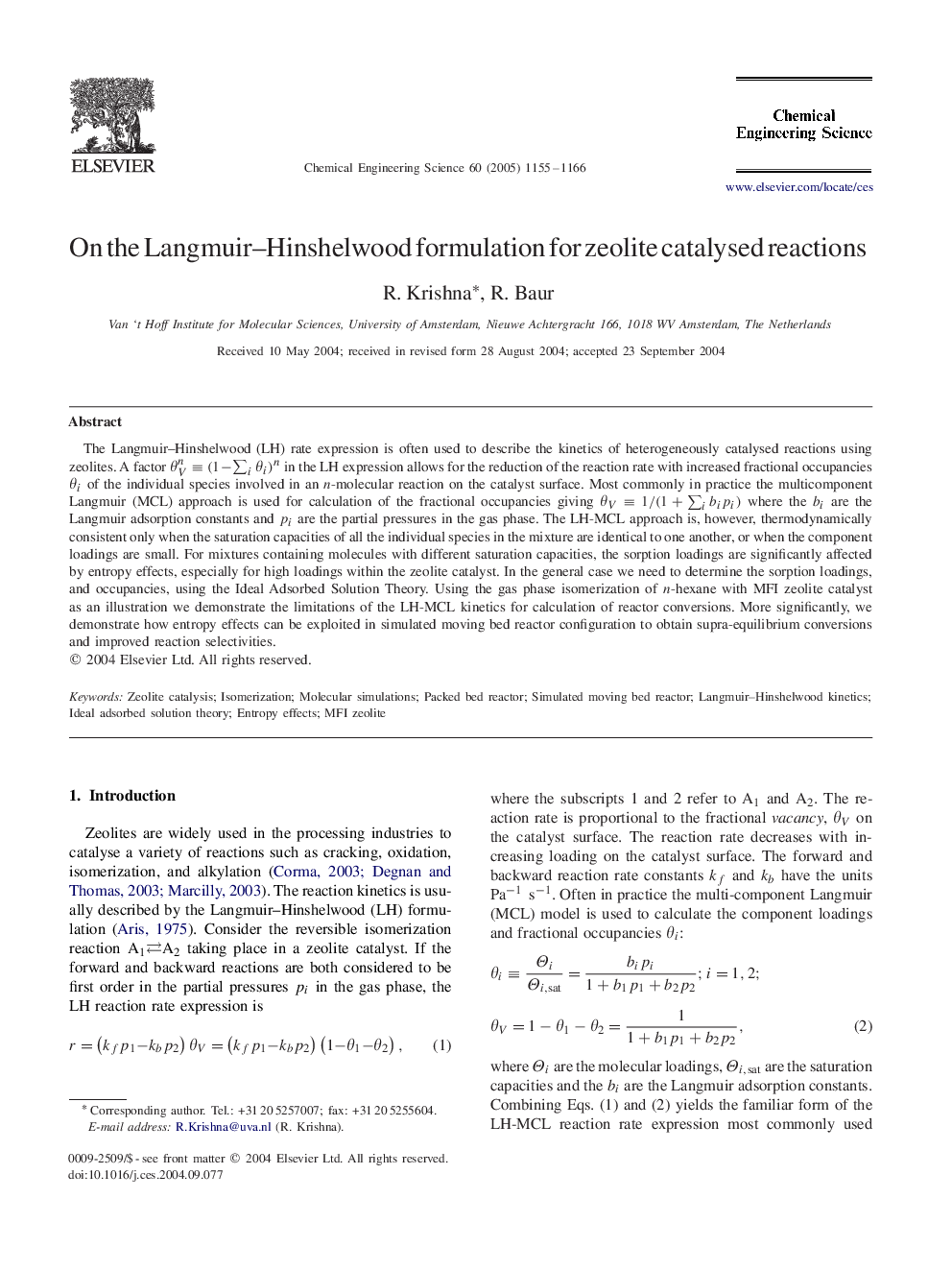| Article ID | Journal | Published Year | Pages | File Type |
|---|---|---|---|---|
| 10263667 | Chemical Engineering Science | 2005 | 12 Pages |
Abstract
The Langmuir-Hinshelwood (LH) rate expression is often used to describe the kinetics of heterogeneously catalysed reactions using zeolites. A factor θVnâ¡(1-âiθi)n in the LH expression allows for the reduction of the reaction rate with increased fractional occupancies θi of the individual species involved in an n-molecular reaction on the catalyst surface. Most commonly in practice the multicomponent Langmuir (MCL) approach is used for calculation of the fractional occupancies giving θVâ¡1/(1+âibipi) where the bi are the Langmuir adsorption constants and pi are the partial pressures in the gas phase. The LH-MCL approach is, however, thermodynamically consistent only when the saturation capacities of all the individual species in the mixture are identical to one another, or when the component loadings are small. For mixtures containing molecules with different saturation capacities, the sorption loadings are significantly affected by entropy effects, especially for high loadings within the zeolite catalyst. In the general case we need to determine the sorption loadings, and occupancies, using the Ideal Adsorbed Solution Theory. Using the gas phase isomerization of n-hexane with MFI zeolite catalyst as an illustration we demonstrate the limitations of the LH-MCL kinetics for calculation of reactor conversions. More significantly, we demonstrate how entropy effects can be exploited in simulated moving bed reactor configuration to obtain supra-equilibrium conversions and improved reaction selectivities.
Keywords
Related Topics
Physical Sciences and Engineering
Chemical Engineering
Chemical Engineering (General)
Authors
R. Krishna, R. Baur,
